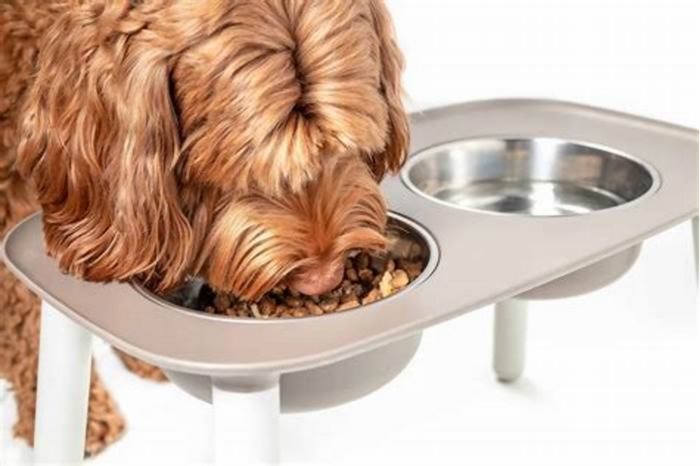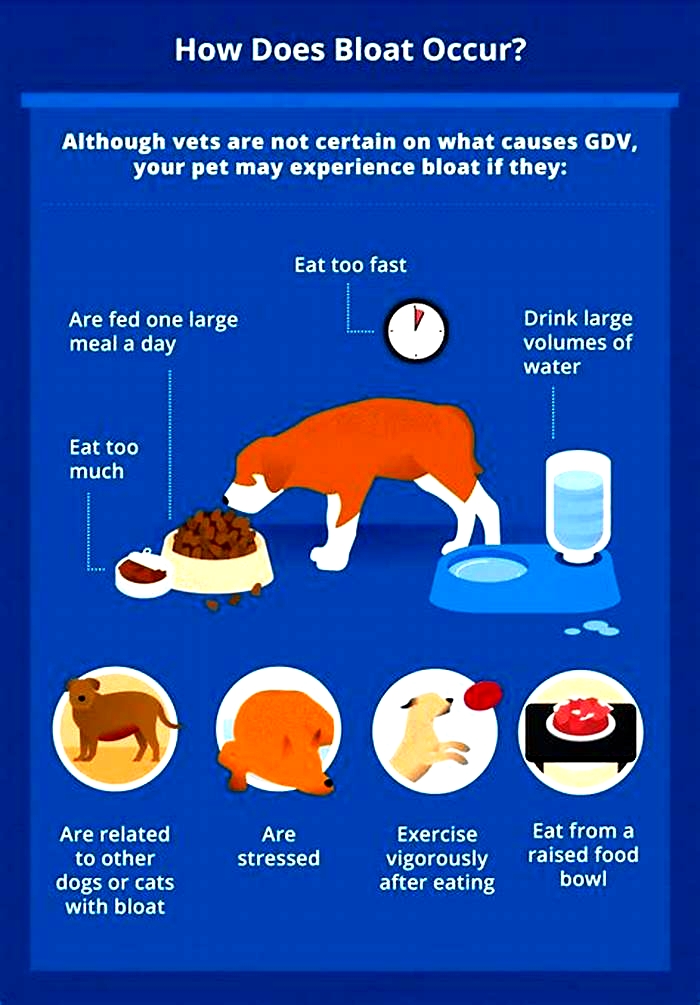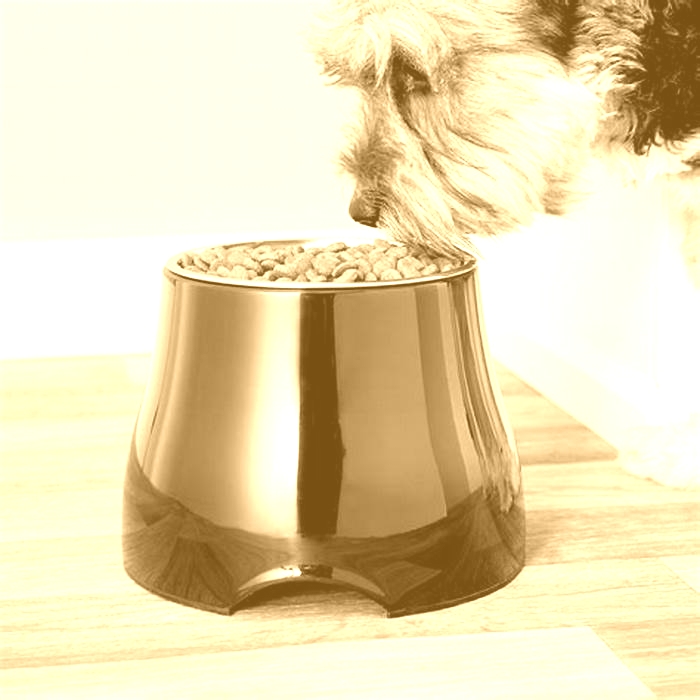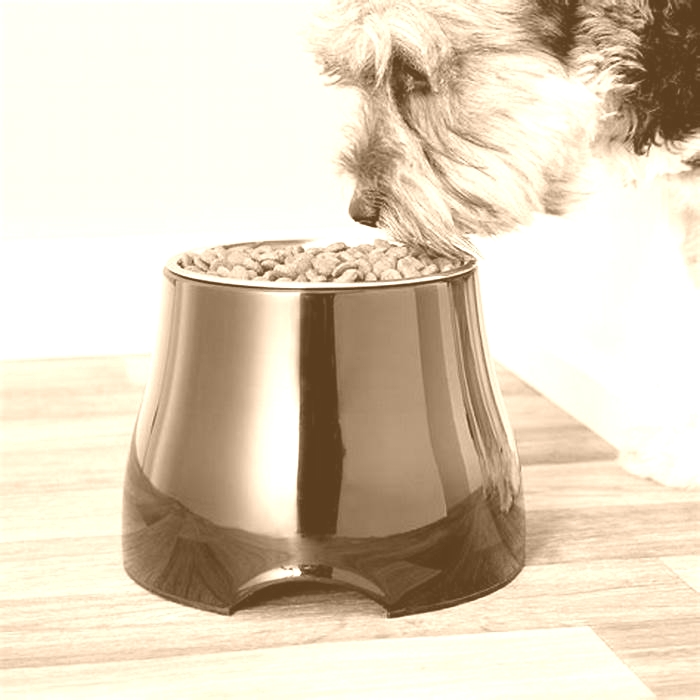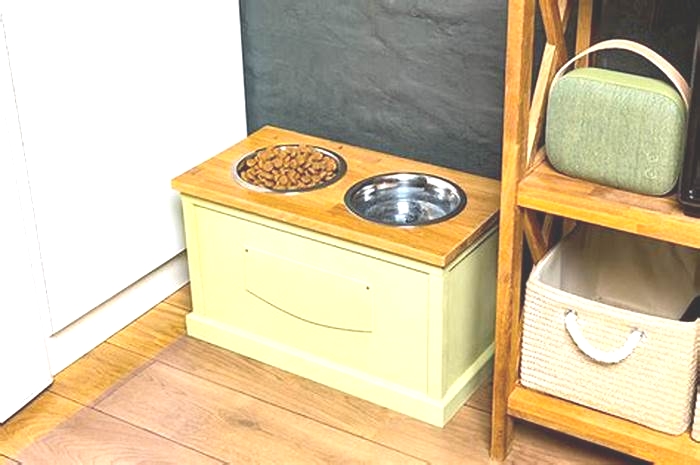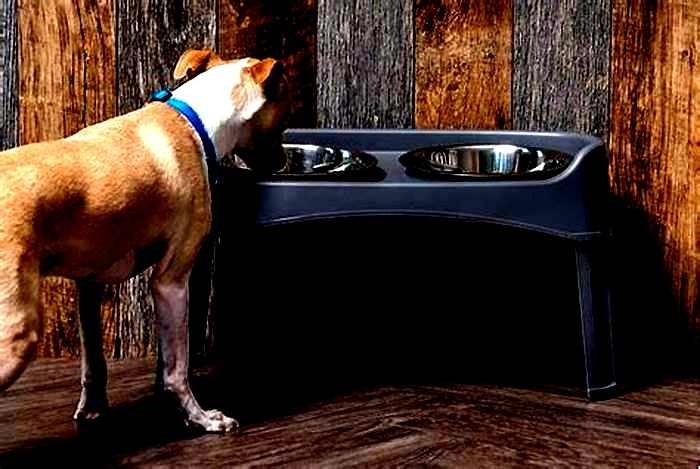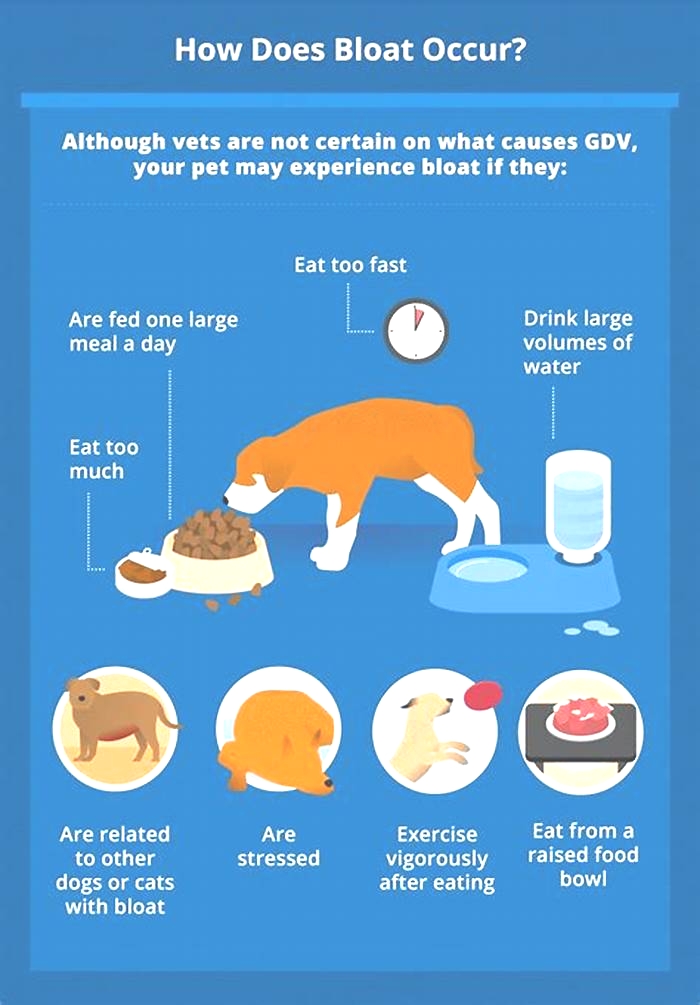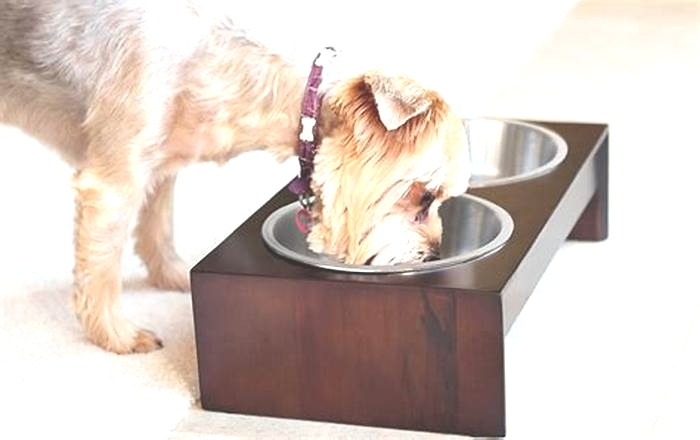Are raised dog bowls better for older dogs
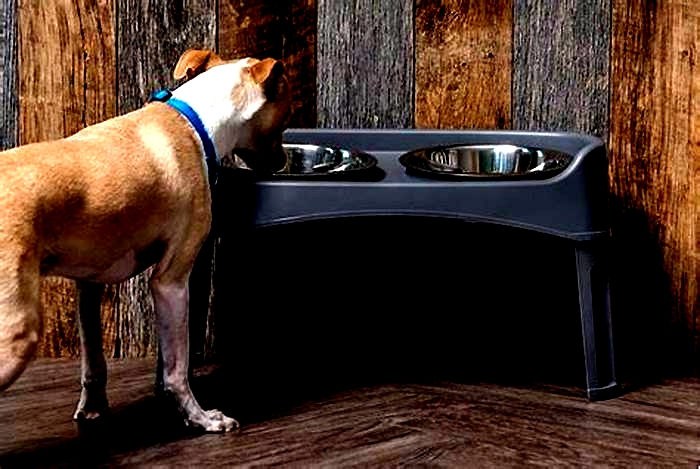
The Pros & Cons of Elevated Dog Bowls A Quick Guide
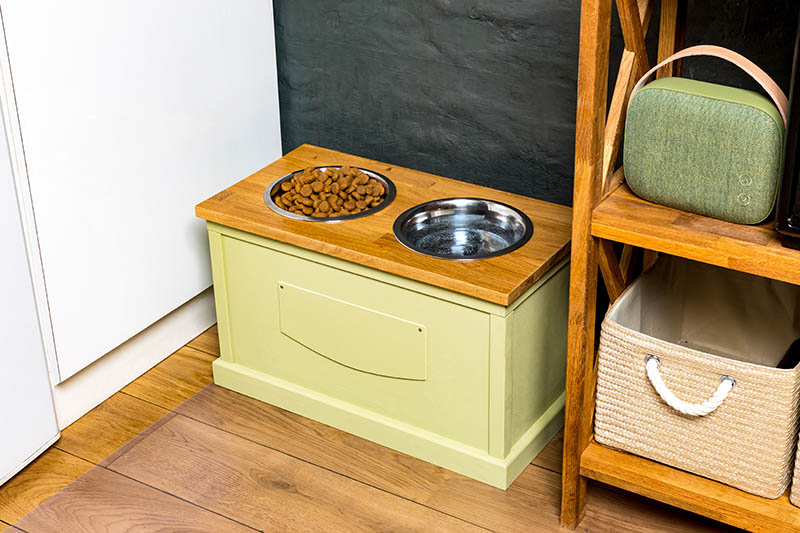
If theres one topic that can cause uproar between dog owners, its feeding time. What your dog eats, when it eats, how often it eats, these are all questions that spark debate. Another hot topic is whether or not your dog should be using an elevated dog bowl. While the science is still out on how effective they really are, there are key benefits to elevated dog feeders that may be great for your dog.
About Elevated Dog Bowls
If your dog struggles or misbehaves at eating time, an elevated dog bowl may be right for you. There are different styles of feeders to fit your dogs needs, ranging in overall size, materials, and design.
What are Elevated Dog Bowls?
Also known as elevated dog feeders, elevated dog bowls are simply dog bowls raised from the floor with a stand of some sort to keep it elevated. They come in a variety of sizes, so theyre useful for both toy-sized and large-sized dogs. Elevated dog feeders make your dogs food closer and easier to eat, so a lot of dogs tend to prefer them. Elevated dog bowl stands are also great to keep water and food bowls together on one feeder, instead of having two separate bowls sliding around on the floor.
What Were Elevated Dog Bowls Originally Invented For?
Elevated dog bowls were first invented as a sure-fire way to prevent bloat, which refers to two life-threatening conditions: GD and GDV.
Gastric Dilatation (GD) causes your dogs stomach to painfully fill with gas, which is already a serious medical emergency. Gastric Dilatation & Volvulus (GDV) is when the gas-filled stomach starts to twist on itself, which cuts off the circulation of the stomach and blood flow.
Both conditions are considered extremely dangerous and should be treated as soon as possible Call your vet immediately if your dog shows one or more symptoms of bloat:
- Distended (bloated) stomach and abdomen
- Anxious pacing and restlessness
- Multiple failed attempts at vomiting
- Rapid breathing, yawning, whining
Do Elevated Dog Feeders Actually Help with Bloat?
While they were first marketed as one of the best ways to prevent bloat, the truth is much foggier than what companies first claimed. The problem is that these claims went unchecked at first, but there is more data available now about the truth of elevated dog feeders.
While they can help with bloat, the risk is not as minimized as companies have claimed. Bloat tends to happen more to fast eaters and dogs who tend to eat a lot of air as they eat, so it really depends on your dog if an elevated bowl can help. If your dog is liable to get bloat, talk to your veterinarian about your options to prevent it.
Pros of Elevated Dog Bowls
Regardless of its original purpose to prevent bloat, there are other benefits of using elevated dog feeders that may help your furry friend out. Here are some pros and cons of elevated dog feeders:
Overall Better Posture While Eating
Because theyre off the ground, elevated dog bowls naturally help your dogs posture while eating. The raised dishes are at a more comfortable height, which will relieve some neck and joint stress from ground-level bowls. Make sure to find the right height for your dog to benefit from the elevated feeder.
Easier for Dogs to Eat
The raised height of elevated dog feeders makes access to food and water easier, especially for senior dogs that struggle to eat from traditional bowls. It also helps all dogs with eating more comfortably, since the angle of their neck changes with the elevation. If your dog tends to struggle with eating, an elevated dog bowl may alleviate some discomfort.
Sturdier & more stable than Normal Bowls
Elevated dog feeders can be especially beneficial if your dog would rather play with his dog bowls. They can be sturdier and stable than normal bowls, built to withstand pushing and sliding. Some elevated dog bowls are even designed to prevent tipping, scratching and biting, depending on the model and brand.
- Better posture while eating
- Easier for your dog to eat
- More stable than traditional dog bowls
Cons of Elevated Dog Bowls
As with most products in any category, there are some disadvantages to elevated dog bowls that may change your decision. Here are some disadvantages of elevated dog bowls:
Expensive Compared to Traditional Bowls
Dogs are expensive, no matter how you look at it. An elevated dog bowl is another expense that may be added to the list. While they may not cost hundreds of dollars, they can still get very costly for the more premium-grade models. Consider what the elevated bowl will do and if it would really help before purchasing one.
Harder to Clean and Maintain
With all of the nooks and crannies, the elevated dog bowl stands can be a real pain to clean and take care of. Some models may have multiple separate pieces, which can trap bacteria. Most elevated dog bowl stands are also not dishwasher safe, so youll have to handwash it.
Doesnt Prevent Messy Eating
If you have a messy eater, dont hope for a miracle unless you buy an elevated dog bowl designed to be mess-free. Water will still be dripped and splashed around, just at a higher height. Extra-large breeds with big muzzles like the English Mastiff are notorious for their messy drinking and eating, so an elevated water bowl may not help with that at all.
- More expensive than traditional bowls
- Feeder stands can be hard to clean
- Can still be really messy (especially slobbery dogs)
Final Thoughts
There are many reasons to buy or not to buy an elevated dog bowl, but your dogs health and wellness should always be a priority. If your dog may benefit from an elevated dog bowl, it may save you money in the long run. Theyre great for most dogs, even for breeds as small as a Yorkshire Terrier.
Dogs are expensive, no matter how you crunch the numbers. Adding another product to the list may get costly, but elevated dog bowl stands are usually a one-time purchase. If youre hesitant about spending the extra money, think about how it may benefit you and your dog in the long run. Also, you may end up buying an elevated dog bowl years later when your dog becomes a senior, so you may want to invest in a stand before that time comes.
If your dog struggles to eat while standing or tends to slide the bowl around, an elevated dog bowl may be the right option. Its important to look for high-quality brands with features that benefit your dogs eating habits. Except for a few small disadvantages, an elevated dog bowl can be a great investment for a more comfortable mealtime experience.
See Also:
Featured Image Credit: Peteris Zalitis, Shutterstock
Raised Dog Bowls The Controversy Surrounding Them
If theres one topic that can really get us going, its probably the issue surrounding elevated feeders for dogs.
For those of you that might not be familiar with this controversy, heres a little background on the argument surrounding whether its safe or not to use raised dog bowls.
The Raised Dog Bowls Controversy
Back in 2004, Purdue University published findings of the Glickman Study on their website from what they called research regarding feeding the larger and giant breeds from elevated dog bowls.
They claimed that by feeding on raised dog bowls along with chest size, high-fat diets, and citric acid, larger dog breeds are at a higher risk of bloating.Linda Arndt was a well-respected breeder of Great Danes (more susceptible to bloat than any other breed) who shared that this study did not consist of research at all it was simply a statistical study. Whats the difference?
Research means to establish new and original facts, while statistical studies are the collection, organization and interpretation of data which is what this appears to have been.
According to Linda, they simply gathered information on diet from the original study done on Great Danes. They then looked at the different dog food brands and pulled the ingredient information from each food and this is how they came to their conclusion.
They basically pulled information from an older study and compared the results to the dog food ingredients and came up with something like this if you take this and add that, then these are the results.
Not sure that makes the study valid or conclusive.
Unnecessarily Scaring Dog Owners
Purdue scared the pants off dog owners that own large and giant breed dogs with this study. As a matter of fact, I hear it all the time from dog owners of all breeds and sizes that think raised dog bowls/feeders are a no-no.
Prior to this, Purdue University always taught that all large and giant breeds should be fed from elevated dog bowls / feeders and books from way back taught this as well.
Purdues idea of not feeding dogs from raised dishes was a statistical study not Scientific research, and quite honestly this analysis, just doesnt make sense.
We remember around the time that their study came out, we had just purchased raised dog bowls for our own dogs.
All three of our dogs, including our deep chested Lab and deep chested very large Doberman were doing much better using elevated dog bowls.
We noticed a big difference with gas and burping, yet we were completely confused after reading the article. Should we switch back to feeding them on the floor or not?
After further research into the matter and watching our own dogs respond, we chose to stick with using raised dog bowls and we still do today. The dog is more comfortable and doesnt have to strain his neck and back to eat his meal from the floor.
Reputable and experienced breeders of large and giant breeds, know what works and go back to what they were taught before this study became available.
Stress Is Believed to Be a Large Factor
Stress of any kind is believed to be one of the biggest factors in dogs bloating. Feeding time should be a quiet, relaxing time before and after the dog actually eats.
Whether the stress is due to poor nutrition, nervousness, lack of exercise, dysfunction in the home, the over use of antibiotics causing a Ph imbalance, the dog being over vaccinated or hormonal issues; it is believed that all of these stress factors may contribute to bloating.
Its VERY IMPORTANT that your dogs feeding time, be a quiet time. Allow him or her to eat in peace. Having more than one dog, we always allow one dog to eat in the pantry (we call it her room) with the door closed, and the other to eat in our dining room.
PEACE WHILE EATING PLEASE!
Allow your dog to eat without the threat of people or other animals walking around him or her while eating. AVOID allowing children around the dog while hes trying to enjoy his meal.
The Connection Between the Spine and Bloating
Dr. Peter Dobias is a reputable, Holistic Veterinarian who over the years, found a connection between the stomach and the spine. He found that dogs who are prone to stomach problems will show symptoms of congestion, inflammation, and sensitivity located directly at the thoracic-lumbar junction of the spine. The thoracic-lumbar junction starts at the base of your dogs neck and runs to roughly the middle of his back.
He interviewed several emergency veterinarians and asked if they found vertebral degeneration, arthritis or spondylosis when reviewing the X-rays of dogs who have bloated. The vets confirmed that those symptoms are commonly present in bloated dogs, which confirmed Dr. Dobias theory that back problems are a predisposed influence for Gastric Dilation Volvulus.
Bottom line: Paying close attention to your dogs spine and including a monthly exam, plays a very important role in preventing bloating. Ive used acupuncture on my dogs and they love it. It has helped tremendously for many things. Dr. Dobias suggests using either acupuncture, physiotherapy, massage or intramuscular needle stimulation for your dogs back issues.
If youre not sure, a good Chiropractor that works on animals can certainly help.
Its Not the Bowl Its Whats Inside the Bowl!
Weve been feeding our own bloat susceptible large dogs out of raised feeders for years and firmly believe that its all about whats inside that raised dog bowls along with several other factors!
We hear it all the time from dog owners; I feed a good quality kibble. While there may be better brands of kibble; the truth of the matter is that kibble is kibble. Dogs digest natural forms of protein better than anything else. And, based upon our own experience, dogs digest raw forms of meat protein better than anything else.
The wrong diet weakens the stomach lining. The stronger the stomach lining, the less susceptible your dog is to bloating. Be concerned with strengthening your dogs stomach lining and avoiding excess air intake.
Reputable veterinarians such as Dr. Dobias say that over time, grain-based kibble diets weaken the stomach walls making a dog more susceptible to bloating. Learn more about feeding raw diets to older dogs here.
You MUST Pay Constant Attention to the Stomach WATCH and LISTEN!!
One of the most ridiculous recommendations for avoiding bloat that we have read was from a dog trainer who recommends that you toss the kibble all over the house and have the dog search for it.
Working and studying dogs for more than 30 years, we believe that Bloat is definitely a predisposed condition for many large breeds. We also believe that it has everything to do with what type of diet you feed, the overall health of your dog, stress factors and so on.
THE POINT IS: Its a matter of looking at your dogs health and the big picture as a whole, and not just one detail such as feeding from an elevated feeder or not. Your dogs digestive process is much more complicated than just choosing to feed from the floor or off the floor.
We recently read an article authored by a Vet who cited a study and warned dog owners about using elevated dog bowls/feeders.
However, he was contacted by another Vet from Colorado in the comment section of his blog, who warned that he should be careful with telling dog owners that feeding from the floor will prevent bloat. It included another excellent comment from Lazaro who at the time owned 8 Danes and like us, fed them raw from elevated feeders and never had a problem.
Read more about the symptoms of bloat and how to prevent it here.
Editors Note: The blog post was originally published in November 2011 and completely revamped and updated for accuracy on January 2021.

